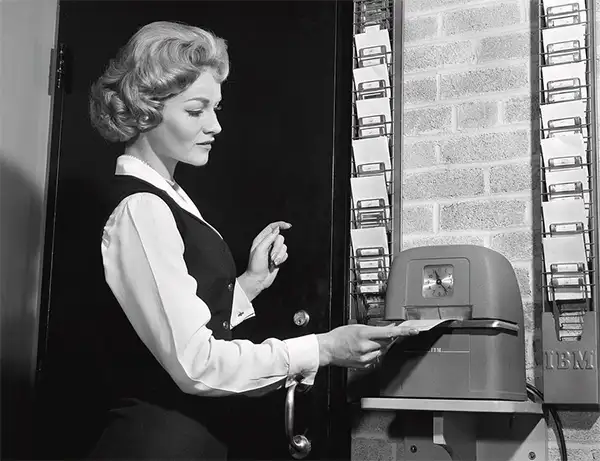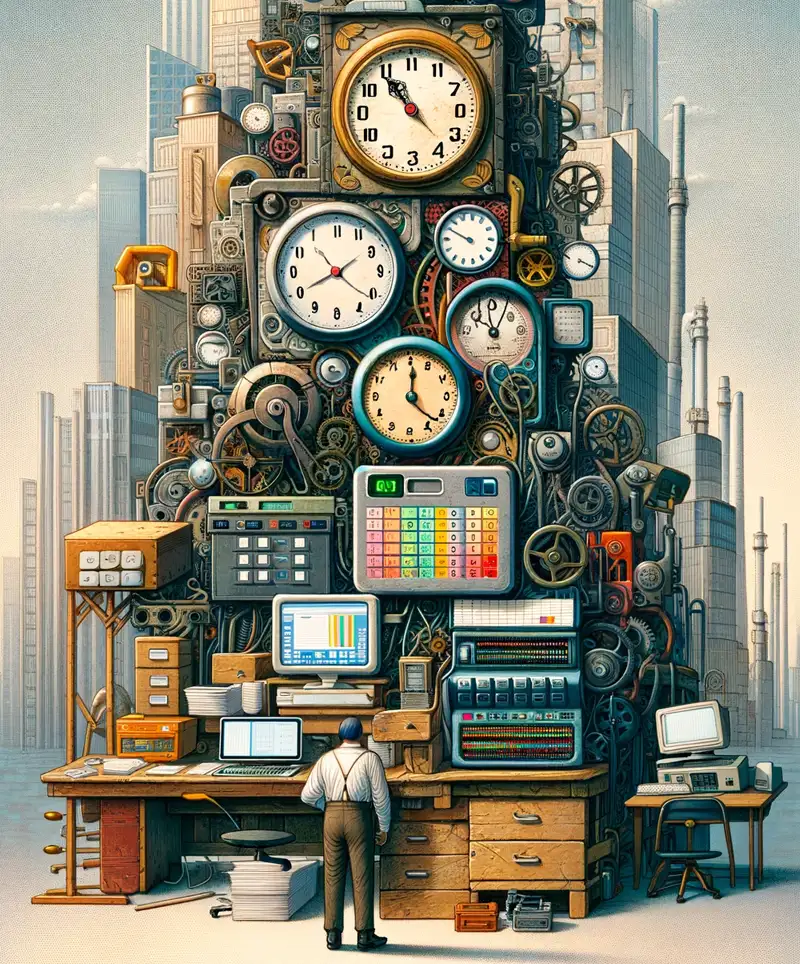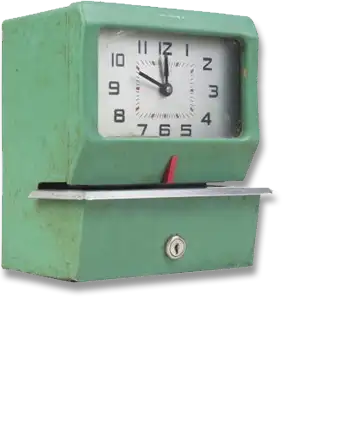Celebrating the Time-Honored Tradition of Timekeeping
Punch the Clock Day, swooping in every January 27th, is less of a national holiday and more of an unscheduled meeting in the conference room of quirky celebrations. It's the day we pay homage to the trusty time clock. This device has stood sentinel at the gates of workplaces for over a century, dutifully noting our arrivals and departures with the precision of a Swiss watch and the judgment of a stern headmaster.
This day isn't just a tip of the hat to the mechanical timekeeper; it's an ode to the ritual that begins and ends our workday. The punch clock is the silent observer of rushed morning coffees, water-cooler gossip, and the stealthy, clock-watching anticipation of the end-of-day exodus. It's a testament to the age-old dance between employee and employer, a rhythm set to the beat of click-ins and click-outs.
Why January 27th, though? Perhaps it's because by this time, the New Year's resolutions of punctuality have worn thin, and we need a gentle, albeit mechanical, nudge back to reality. Or maybe it's just a whimsical choice, like celebrating left-handed scissors or mismatched socks. Whatever the reason, Punch the Clock Day elevates the humble time clock from a mere keeper of hours to the keeper of our daily work saga.
 This is a day for the unsung heroes of the 9-to-5 symphony, those who punch in early, those who slide in just under the wire, and even those who manage to sneak out unnoticed for a long lunch. It's a celebration of the often-overlooked yet crucial part of our workday routine. After all, where would we be without the rhythmic punctuality of the punch clock, faithfully ticking away the moments of our professional lives?
This is a day for the unsung heroes of the 9-to-5 symphony, those who punch in early, those who slide in just under the wire, and even those who manage to sneak out unnoticed for a long lunch. It's a celebration of the often-overlooked yet crucial part of our workday routine. After all, where would we be without the rhythmic punctuality of the punch clock, faithfully ticking away the moments of our professional lives?
A Brief History of Time... Clocks
In the bustling aftermath of the Industrial Revolution, the concept of 'time is money' took on a literal meaning. Enter the time clock, a groundbreaking invention that emerged in the late 19th century as the overseer of the industrial workforce's time and labor. This mechanical marvel was birthed out of necessity in an age where the manual tracking of countless workers' hours became as cumbersome as operating the steam-powered machinery itself.
The earliest known time clock was invented in 1888 by Willard Le Grand Bundy, a jeweler in New York. His device, charmingly named the "Workman's Time Recorder," was the first to mechanically record what we now casually refer to as clocking in and out. This invention was less about keeping time and more about keeping tabs - a manager's dream and perhaps a worker's not-so-dreamy reality.
Bundy's invention quickly caught on, leading to the formation of the Bundy Manufacturing Company. These clocks became a fixture in workplaces, evolving from simple mechanical stampers to more sophisticated devices that could print time on heavy paper cards, known as punch cards. The punch card became the silent witness to a worker's punctuality (or lack thereof) and a tangible record of their daily grind.
These time clocks were more than just mechanical timekeepers; they were symbols of a changing world. The Industrial Age brought about a shift in how work was viewed and valued, and the time clock was at the forefront of this transformation. It represented a new era of efficiency, organization, and control in the workplace. The tick-tock of these machines echoed the heartbeat of industry, marking the rhythm of the working day in a rapidly modernizing world.
Over the decades, time clocks have witnessed the evolution of the workplace, from factories echoing with the clatter of machinery to silent offices bathed in the glow of computer screens. They've evolved from Bundy's mechanical contrivance to digital systems and biometric scanners, yet their purpose remains fundamentally unchanged - to track the precious commodity of time in the service of labor.
The Art of Punching In
Punching in is an art form perfected by employees over decades. It involves a delicate balance of timing, speed, and the occasional ninja-like maneuver to avoid being seen by the boss when sneaking in late. The punch card, a paper card that gets its daily dose of ink, serves as a testament to one's dedication to the 9-to-5 grind. Or, in some cases, it's a record of one's uncanny ability to arrive just in the nick of time.
Over the years, the time clock has evolved from a simple mechanical device to sophisticated digital systems that can even detect the unique whorls of your fingerprint. Gone are the days of 'buddy punching,' where a helpful coworker could punch in for you. Now, it's all retina scans and biometrics – because if there's one thing more certain than taxes, it's the 8-hour workday.
Celebrating Punch the Clock Day
How does one celebrate Punch the Clock Day? You could start by actually arriving on time, a revolutionary act in some establishments. Or perhaps take a moment to appreciate the precision and efficiency of your workplace's timekeeping system, even if it feels like it's watching you a little too closely. You could even share a chuckle with your coworkers over the time clock's uncanny ability to slow down time at 4:55 PM.
Punch the Clock Day is more than just a nod to a piece of machinery; it's a celebration of our relationship with time in the workplace. It's a day to reflect on how we spend our hours and to appreciate the magical device that reminds us that every minute counts. So here's to the time clock – may your punches be timely and your workday be short.
Please Share our Content






 This is a day for the unsung heroes of the 9-to-5 symphony, those who punch in early, those who slide in just under the wire, and even those who manage to sneak out unnoticed for a long lunch. It's a celebration of the often-overlooked yet crucial part of our workday routine. After all, where would we be without the rhythmic punctuality of the punch clock, faithfully ticking away the moments of our professional lives?
This is a day for the unsung heroes of the 9-to-5 symphony, those who punch in early, those who slide in just under the wire, and even those who manage to sneak out unnoticed for a long lunch. It's a celebration of the often-overlooked yet crucial part of our workday routine. After all, where would we be without the rhythmic punctuality of the punch clock, faithfully ticking away the moments of our professional lives?








 "Sláinte!" is a traditional Irish expression used as a toast, equivalent to "Cheers!" in English.
"Sláinte!" is a traditional Irish expression used as a toast, equivalent to "Cheers!" in English.